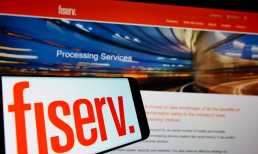As noted in a Mobile Order-Ahead Tracker, PYMNTS found that 45 percent of consumers would spend more at restaurants if they were allowed to pay online. Drilling down, 35 percent said they would spend more if they could order online through mobile apps.
The stage might be set then for restaurants — particularly quick-services restaurants (QSRs) — to enjoy a sales surge. But with that increased demand comes an increased risk of fraud. And fighting friendly fraud will be quite the challenge, as Vikram Dhawan, vice president and senior product leader at Kount, told PYMNTS in an interview.
But if merchants are proactive around implementing advanced tech-driven fraud prevention efforts, they’ll be able to improve brand reputation and loyalty, said Dhawan. At a high level, the shift to MOA boosts a restaurant’s risk profile. Because consumers often use the same credentials across multiple sites and apps, fraudsters don’t need all that much data to launch successful strikes. The challenge will grow as restaurants open in large numbers and MOA volumes grow, reflecting a trend that is here to stay.
“As soon as you go from card-present to card-not-present transactions, you bring on the associated risks,” said Dhawan.
That gives fraudsters a window of time to strike, and it gives firms an ever-shrinking window of time in which to react. Increasingly, he noted, bad actors are “going after” the loyalty and rewards points that carry a lot of financial value. Protecting those points is essential to keeping good customer experiences and trust in place for the merchants.
Advertisement: Scroll to Continue
Along the way, introducing friction into the process — in a bid to authenticate transactions — is a surefire way to derail those same purchases (and cause QSRs to lose sales).
With Friends Like These…
Friendly fraud is a huge problem and exists as “an unfortunate side effect in the entire eCommerce universe,” Dhawan said. It’s also a conduit to repeated friendly fraud attempts (customers who keep reporting issues with orders and getting comped, for example, may not know they are committing fraud).
As in so many other verticals, data can help food service firms combat the criminals. The QSR may be quick to refund a customer the first or second time they dispute an order, but having real-time data at hand can help a restaurant keep track of how many times an individual has had an issue. There are also other levels of value in helping consumers create digital identities, and then tracking them.
“By understanding the digital identity of the consumer, the businesses can use information about them to cross-sell, upsell and reward their best consumers,” explained Dhawan.
Hypothetically speaking, the consumer who always buys a small order of French fries through an app might be persuaded to be “upsold” to a medium fry or to get a drink with that order the next time around. Those suggestions can create a more favorable customer experience.
Through the help of platforms like Kount (with its digital identity trust and fraud prevention efforts), Dhawan noted that data can be leveraged to protect loyalty point systems and help merchants proactively reach out to their end users. It’s too big an undertaking for the QSRs themselves, he said.
“At the end of the day, they just don’t have the visibility into the transactions, or across the economy, to understand the fraud risk,” he pointed out. “And that’s where the vendors like Kount come in with our 9,000-plus brands globally — to help them to identify the fraud risk via the network effect.”




